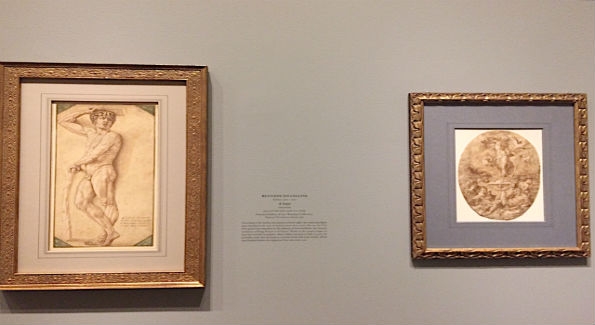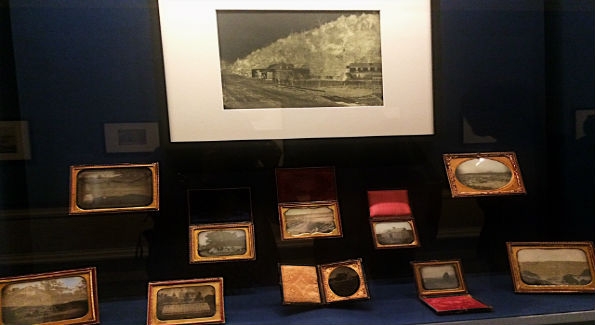A look into the past with landscape photography and old master drawings at the National Gallery of Art

Left: A Satyr (1544/1545) by Benvenuto Cellini Right: The Resurrection of Christ (1545/1548) by Francesco Salviati, gift of Andrea Woodner
The National Gallery of Art is showcasing two new exhibitions of rare, revolutionary art for the very first time.
East of the Mississippi: Nineteenth-Century American Landscape Photography is the first exhibition anywhere focusing on Eastern landscape photography during the nineteenth century. The Woodner Collection displays 106 old master drawings from artists such as Leonardo da Vinci, Pablo Picasso, and Rembrandt.
In a press preview, Earl A. Powell III, director of the National Gallery, recognized the New Orleans Museum of Art for their partnership of the exhibition. Curator Diane Waggoner gave a lecture about the significance of photography in the rapidly changing era of the Civil War.
“Though it was not the first war to be fought after the invention of photography, it marked the earliest sustained use of the medium,” Wagonner noted in her lecture. “Photography offered an unprecedented means to frame the modifications and devastation wrought on the landscape.”
The daguerreotype, invented by Louis Jacques-Mandé Daguerre, was popularly used for taking portraits, but it was also useful for capturing scenic spots along the East Coast. Several homeowners in New England for instance, had daguerreotypes of their houses taken and kept in keepsake frames, which are on display in the gallery.

Photography, invented in 1838, catapulted an innovation of capturing scenes and landscapes. It became popular thereafter.
The exhibition also features an interactive component. There are stereoscopes for viewers to see firsthand one of the earliest and most popular form of 3D photography. This special device has two lenses side by side– each has identical, yet slightly different perspectives. When looking into the stereoscope, your eyes merge the two images together.

Interactive components of the exhibit include two stereoscopes, a daguerreotype and salter paper print covered by a curtain that must be lifted for the image to be visible.
Ian Woodner had previous ties to the nation’s capitol. An architect and real estate developer, Woodner had done real estate development in Washington before.
After his death in 1990, his daughters Dian and Andrea continued their father’s legacy and fulfilled his wishes of bestowing his collected works to the National Gallery.
The collection’s broad timeline spanning from the fourteenth century to the late twentieth century reflects Ian Woodner’s appreciation for various styles of art.
“He could respond to an anonymous drawing of a Sybil by a Northern artist from 1490 and equally passionately respond to an artist from the Italian Mannerist school like Niccolò dell’ Abate,” Margaret Grasselli, National Gallery curator of old master drawings, says. “They’re totally different drawings and look totally different. He didn’t have a narrow taste.”

Dian and Andrea Woodner have quite different tastes than their father, who appreciated the Renaissance artists the most.
His daughters’ tastes are expansive like their father’s, but different as well. Grasselli appreciates that the daughters have pushed the collection in new and exciting directions, as Dian acquired works by more modern twentieth century artists such as Louise Bourgeois and George Grosz.
“I think it’s very important to realize that this is not a finite collection,” Grasselli says.
“When it came as 145 pieces in 1991, there wasn’t an expectation that it would continue to grow. It will be very interesting to see how it continues to develop over the next few years.”
Both exhibits will be on display from March 12-July 16.




